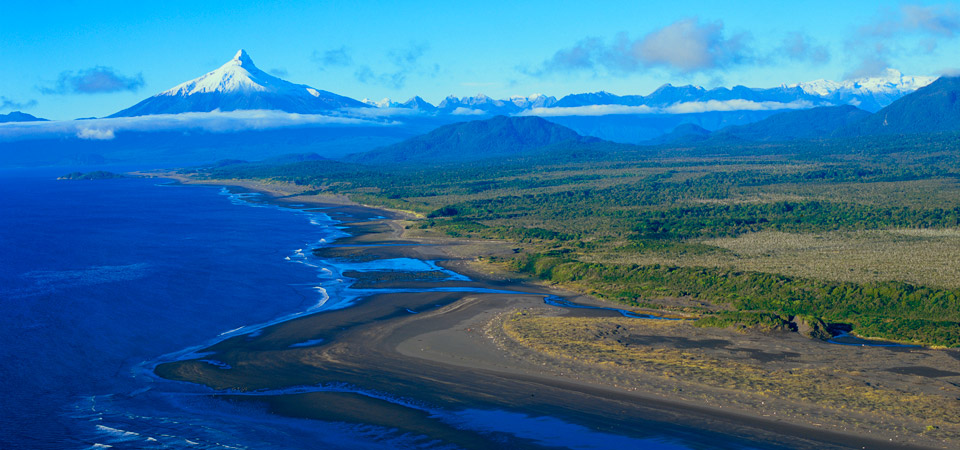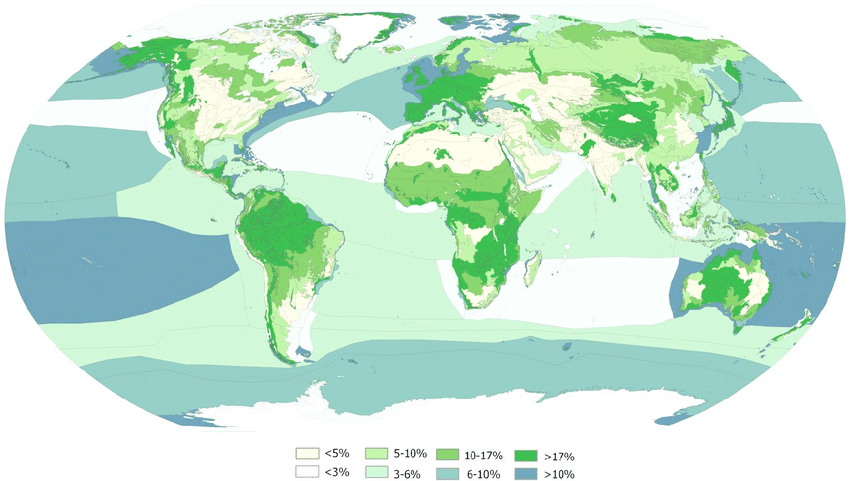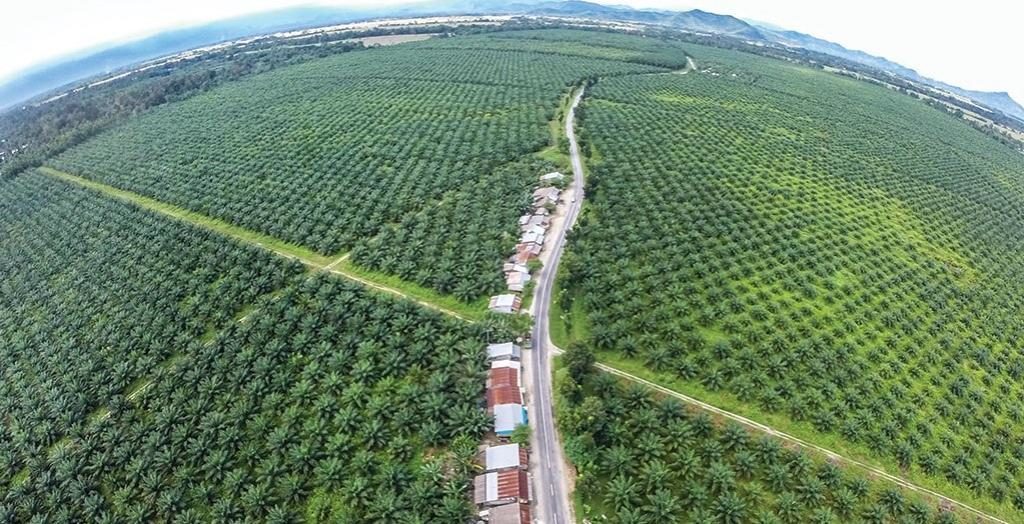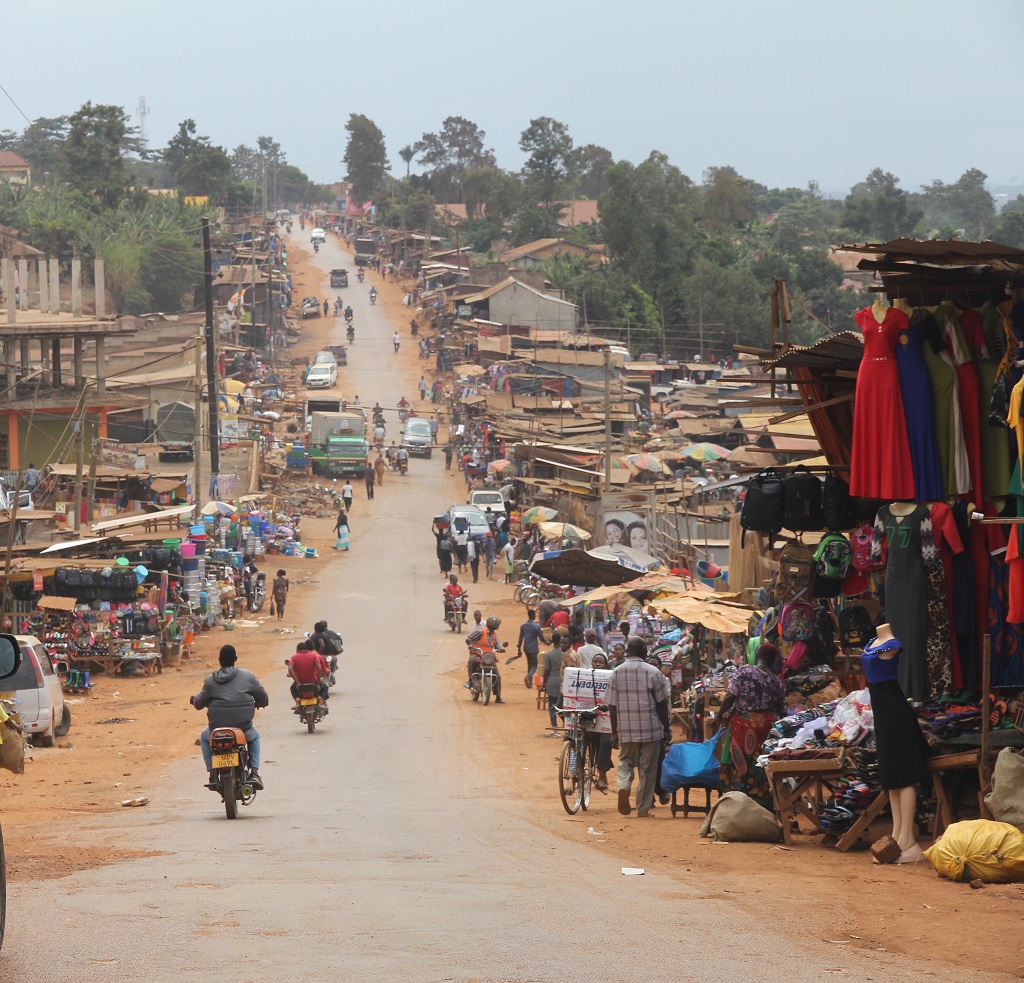This article is part of an editorial collaboration with Earth.Org. The Earth.Org Series can be found here. The original publication can be found here.

The greatest conservation success story in the 21st century is the exponential growth of protected areas–a primary defense mechanism against Earth’s biodiversity loss. In 1992, world nations signed an agreement to create protected areas on land and sea to preserve nature and prevent biodiversity loss. The numbers say we did it. 15% of the Earth’s surface is now marked as protected.
But did we really do it? Do numbers alone speak the truth?
The International Union for Conservation of Nature (IUCN) officially defines a protected area as ‘a clearly defined geographical space, recognised, dedicated and managed, through legal or other effective means, to achieve the long term conservation of nature with associated ecosystem services and cultural values’.
Protected areas play a key role in preserving the benefits that nature brings to people. These benefits, often referred to as ‘ecosystem services,’ include the provision of food and freshwater, the regulation of floods and droughts, nutrient cycling, and recreational opportunities.
The idea of protecting nature was originally conceived in the late 19th century to preserve vast stretches of wilderness in their unspoiled, untouched form. The goal was simple: to keep nature safe from people. While this remains true today, new objectives were added overtime, as protected wildlife zones often became tourist attractions and important economic pillars starting from the 1970s—a period which saw the expansion of protected areas across the world.
Since signing the Convention on Biological Diversity in 1993, the 168 member states have almost doubled the size of their protected areas in their efforts to meet that treaty’s goal: that each nation protects at least 17% of its land area and 10% of its oceans by 2020. As of today, world nations have legally designated over 202,000 protected areas covering 19.8 million square kilometers or 15% of Earth’s surface.
![]() Protected area coverage (in percentage) of the world’s terrestrial (green gradient) and marine (blue gradient) ecoregions of the world. Source: UNEP-WCMC and IUCN, 2018a.
Protected area coverage (in percentage) of the world’s terrestrial (green gradient) and marine (blue gradient) ecoregions of the world. Source: UNEP-WCMC and IUCN, 2018a.
Asia
There are over 10,900 protected areas in Asia that cover 13.9% of the terrestrial environment and 1.8% of the marine and coastal areas. Protected area coverage beyond 12 nautical miles remains critically low; only 0.04% of the marine and coastal areas between 12 and 200 nautical miles in Asia are under protected area management. This is particularly significant as marine biodiversity is most pronounced in shallow waters. Coastal and marine protection per country is very low with no countries covering at least 10% of their marine area within national jurisdiction (0-200 nautical miles). Only four countries, Indonesia, Japan, Pakistan, and Thailand, have more than 5% of their territorial seas covered by protected areas.
Some countries like Bhutan and Brunei Darussalam have around 40% of their land protected while other 14 countries in Asia have less than 17% of their land covered by protected areas. China makes significant contributions to the region’s protected area coverage. In North West China, there are four vast protected areas that cover around 766,000 square km. If these areas were excluded, the total territorial coverage in Asia would drop from 13.9 to 10.2%.

The State of Protected Areas
The rich biodiversity found within Asia’s protected areas is under constant and immense threat. Asia’s high population density–1.5 times the global average— is one of the major factors fueling the degradation of protected areas.
IUCN points out three major categories of threats faced by protected areas: biological resource use, natural system modifications, and agricultural and aquaculture expansion. Biological resource use– the most frequently reported threat–refers to hunting, illicit wildlife trade, and logging inside the designated areas. IUCN suggest a total prevention of use of biological resources in the areas. Natural system modifications refer to management interventions like controlled burn and construction of dams that can cause habitat loss, degrading protected areas. While agricultural expansion leads to deforestation and aquaculture causes erosion of biodiversity within the protected areas.
In South East Asia, ‘biological resource use’ is growing pari passu with rising demand for exotic and wildlife products like rhino horn, pangolins, bear bile, reptiles, turtles, orchids, corals and sharks. Illicit wildlife trade from Asia said to be worth in excess of $23 billion a year, according to the United Nations Office on Drugs and Crime.
Focusing on hydropower for their energy needs countries like Laos, Cambodia, Thailand, Myanmar, and Vietnam are building a number of dams in the Mekong River that flows through their territories. These ‘natural system modification’ projects will likely sound the death knell for many of the region’s protected species. A study by the Mekong River Commission released last year showed that Mekong fish stocks could fall by up to 40 percent as a result of the dam projects.
 Expansion of palm oil fields degraded the existing protected areas in Indonesia
Expansion of palm oil fields degraded the existing protected areas in Indonesia
Agricultural expansion, especially for timber, rubber, and palm oil, has been a major driver of forest loss in countries like Indonesia and Malaysia. In Indonesia, 16% of the total primary forest–6.02 million hectares under protected areas– was lost during 2000-2012. Meanwhile, large swathes of land within protected areas have been allocated for rubber and palm oil plantations by the governments in Cambodia and Laos.
Failure of governments to implement effective conservation policies and curbing corruption has let down the management of protected areas in the region. For instance, in Indonesia–a country with an abysmal transparency score and weak enforcement institutions–forestry remains one of the most graft-prone industries. This is partly rooted in the continuing decentralisation of power to local governments since 1998. The result was an unprecedented increase in the sale of public land from local government to private actors for palm oil plantations and timber logging. Many of these transactions allegedly involved payment to local government officials, and resulted in dozens of major corruption cases like Agung Podomoro land case.
Globally, one-third of all protected areas are under intense human pressure. Over six million square km of protected land face pressure from agriculture, encroaching human settlement, roads, light pollution, rail, and infrastructure development on waterways, recent studies have found. Only 10% of lands were completely free of human activity, but most of these regions are in remote areas of high-latitude nations, such as Russia and Canada. Wealthy and poor nations alike are failing to adequately enforce their protected areas.
Do Protected Areas Really Work?
Legal designation is hence a necessary but alone insufficient instrument for biodiversity protection. Devoid of enforcement and policing mechanisms, as well as of responsive and transparent institutions, protection remains more of an aspiration than a fact.
The effectiveness of protected areas for biodiversity conservation is now questioned by many. A study shows that not all protected areas are up to the standard set by the IUCN. Many governments allow a number of destructive, unsustainable activities within the boundaries of these areas. Over 60% of areas are simply too small—less than one square kilometer—to save big or migrating species. Most protected areas are not well-connected in order to allow movement of animal and plant populations, especially in the face of worsening climate change. While they help buffer species from habitat loss and overexploitation, protected areas do little to save species from other threats like climate change, pollution, and invasive species.
Governments have left most protected areas with too little money for management. Globally protected areas are underfunded to the tune of $18 billion a year: three times as much as is currently spent on managing protected areas ($6 billion). The poor management of these areas opens the door to any number of human impacts including poaching, illegal logging, habitat destruction, illegal fishing, etc.
![]() A successful conservation model: Corcovado National Park, 726,000 acres, Lakes Region, Chile
A successful conservation model: Corcovado National Park, 726,000 acres, Lakes Region, Chile
Solving the Crisis
The future is grim. The human population is likely to touch nine billion by 2035 causing an increased demand for resources that will take an unprecedented toll on protected areas at current per-capita consumption rates.
Policy-makers should stipulate a set of science-based, site-specific nature retention targets aimed at keeping natural systems intact and functioning. Governments should focus on outcomes that are positive for biodiversity, rather than increasing the number of areas. They should also follow the IUCN World Commission on Protected Areas (WCPA)’s framework guide to assess effectiveness of the areas.
A well conserved protected area is a result of collaboration among law enforcement departments, policy-makers, local communities, and other stakeholders. Objectives of managing protected areas, besides the primary one of biodiversity conservation, now also include social and economic ones. Reconciling the objectives with the needs of local livelihoods will require building partnerships and alliances with local businesses and communities. The Chilean Patagonia model, one of the successful collaborative conservation efforts in recent times, is a great example of such a partnership.

Earth.Org is a social-environmental enterprise that uses cloud-powered artificial intelligence and geospatial analytics to generate actionable insights to inform, educate and advocate for a more sustainable world.
Sources :
Protected Planet Report 2018 by UN Environment World Conservation Monitoring Centre (UNEP-WCMC).
International Union for Conservation of Nature annual report 2018.



 Protected area coverage (in percentage) of the world’s terrestrial (green gradient) and marine (blue gradient) ecoregions of the world. Source: UNEP-WCMC and IUCN, 2018a.
Protected area coverage (in percentage) of the world’s terrestrial (green gradient) and marine (blue gradient) ecoregions of the world. Source: UNEP-WCMC and IUCN, 2018a. Expansion of palm oil fields degraded the existing protected areas in Indonesia
Expansion of palm oil fields degraded the existing protected areas in Indonesia A successful conservation model: Corcovado National Park, 726,000 acres, Lakes Region, Chile
A successful conservation model: Corcovado National Park, 726,000 acres, Lakes Region, Chile






